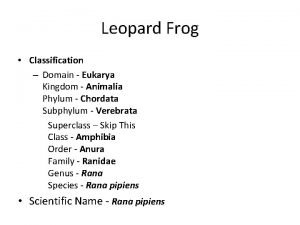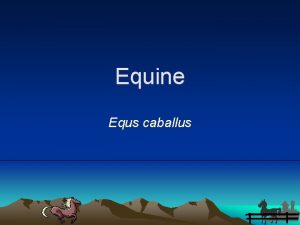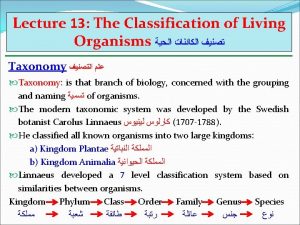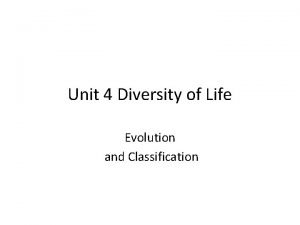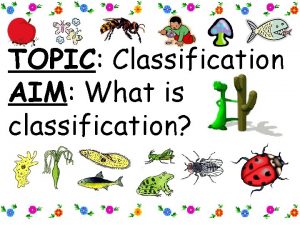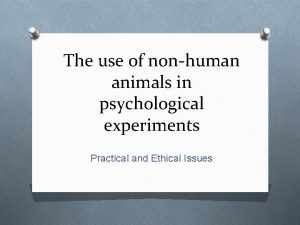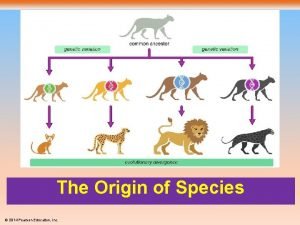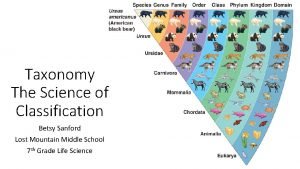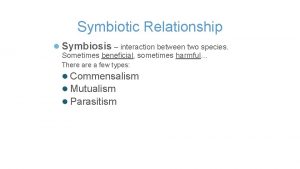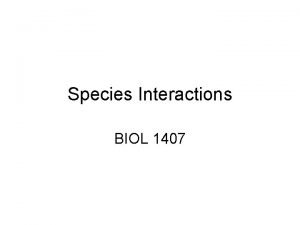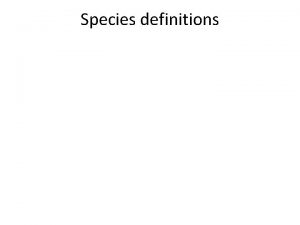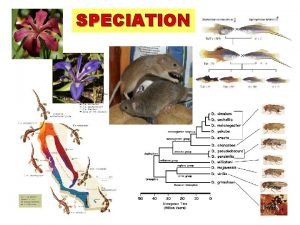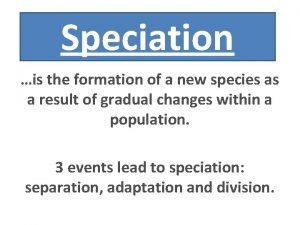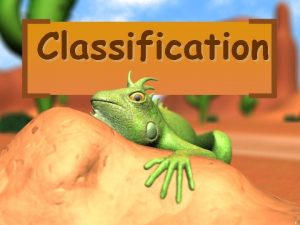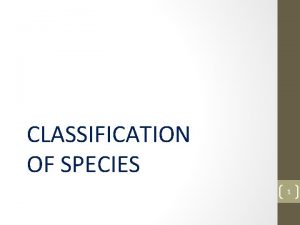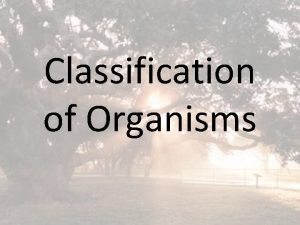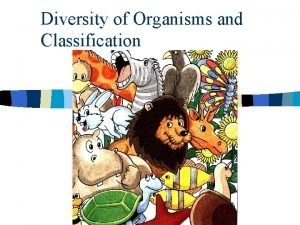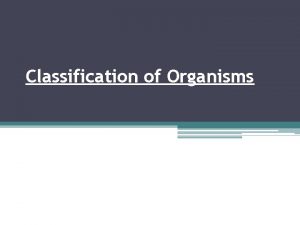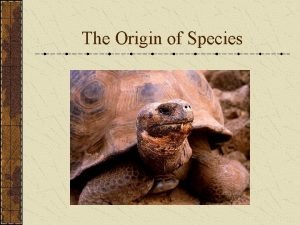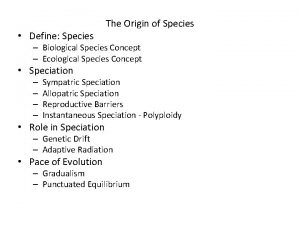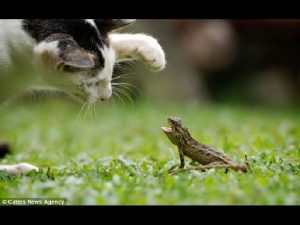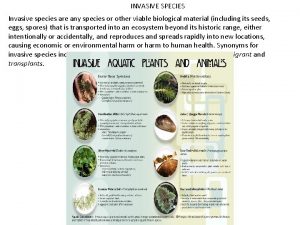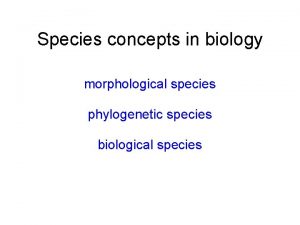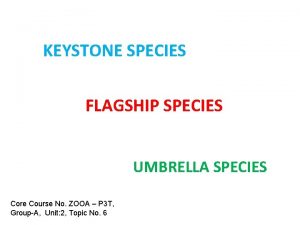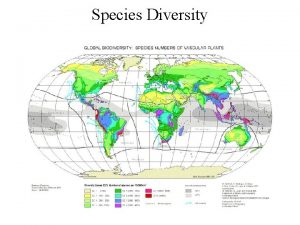1 Classification of organisms 2 Species of Organisms


































- Slides: 34

1

Classification of organisms 2

Species of Organisms • There are 13 billion known species of organisms • This is only 5% of all organisms that ever lived!!!!! • New organisms are still being found and identified 3

What is it? Classification is the arrangement of organisms into orderly groups based on their similarities Also called taxonomy 4

Why classify organism? • Accurate & uniform names • (jellyfish Prevents misnomers (mistakes) are NOT fish) • some Uses same language (Latin or Greek) Sea”horse”? ? 5

Confusion in Using Different Languages for Names 6

Latin Names are Understood by EVERYONE!!! 7

The first taxonomist • Aristotle, 2000 years ago • divided organisms into plants & animals • subdivided them by their habitat -land, sea, or air 8

Father of Taxonomy • Carolus Linnaeus 1707 – 1778 • 18 th century • Classified organisms by their structures • Developed the modern system of naming called binomial nomenclature (2 -word naming system for each species) 9

Binomial Nomenclature • Genus + species (specific epithet) • Latin or Greek • Italicized in print • Capitalize genus, but NOT species • Underline when writing Turdus migratorius American Robin 10

Binomial Nomenclature 11

So how do we group organisms? • Taxon ( taxa-plural) is a category into which related organisms are placed There is a hierarchy (order) for these groups from broadest to most specific • 12

Hierarchy of Taxonomic Groups BROADEST TAXON Domain (3) Kingdom (6) Phylum (called Division for plants) Class Order Family Genus Species 13

King Phillip Came Over For Grape Soup! 14

15

Bellringer Tue, 03/17 1. Felis catus is the species name for a cat! Felis is the _____ catus is the specific _____ 2. Rattus norvegicus is the species name for a _____. Guess! Use your head! Reminders: HW #8 due Fri, LAB FEE anytime, Nice job on quiz! Time’s Up! 30 4 3 2110 1 Minutes 2 3 4 5 6 7 8 9 Minute Seconds 16

17

1. Kingdom Archeabacteria Archaeabacteria live in harsh environments and may represent the first cells to have evolved. Sewage treatment plants, thermal vents, etc. 18

2. Kingdom Eubacteria, some of which cause human diseases, are present in almost all habitats on earth. Live in the intestines of animals Many bacteria are important environmentally and commercially. 19

The rest…all eukaryotic 3. 4. 5. 6. Protista (protozoans, algae…) Fungi (mushrooms, yeasts …) Plantae (multicellular plants) Animalia (multicellular animals) 20

Kingdom Protista • Unicellular (most) and multicellular • Food: autotrophic or heteroprophic 21

Kingdom Fungi • Multicellular, except yeast • Absorptive heterotrophs (digest food outside their body) Cell walls • 22

Kingdom Plantae • Multicellular • Autotrophic • Photosynthesis • Cell walls 23

Kingdom Animalia • Multicellular • Ingestive heterotrophs (eat and digest food inside their bodies) 24

25

26

27

28

Bellringer Wed, 03/25 1. What is a cladogram? Look it up if you don’t know! 2. Take out your dissection sheets and finish questions on back! 3. Pass down your bellringer sheets!!! Reminders: HW #9 due TOM, LAB FEE anytime, Nice job on dissection! Quiz TOM!!! Time’s Up! 30 4 3 2110 1 Minutes 2 3 4 5 6 7 8 9 Minute Seconds 29

What is a Cladogram? Diagram showing how organisms are related based on shared characteristics such as feathers, hair, or scales 30

Primate Cladogram 31

Dichotomous Keying • Used to identify organisms • Characteristics given in pairs • How? Read both characteristics and either go to another set of characteristics OR identify the organism 32

Example of Dichotomous Key What is the identity of my organism? Yes or no to the following questions until you STOP: 1 a Tentacles present – Go to 2 1 b Tentacles absent – Go to 3 2 a Eight Tentacles – Octopus 2 b More than 8 tentacles – 3 3 a Tentacles hang down – go to 4 3 b Tentacles upright–Sea Anemone 4 a Balloon-shaped body–Jellyfish 4 b Body NOT balloon-shaped - 5 33

Dichotomous Key 34
 Keystone plant
Keystone plant Competitive interaction
Competitive interaction Unicellular vs multicellular organisms
Unicellular vs multicellular organisms Systematic position of horse
Systematic position of horse Frog forelimb
Frog forelimb Phylum horse
Phylum horse Classification of horse from kingdom to species
Classification of horse from kingdom to species Levels of classification
Levels of classification Is protozoa prokaryotic or eukaryotic
Is protozoa prokaryotic or eukaryotic Living things table
Living things table Eager leaner
Eager leaner Chronological tabulation is based on
Chronological tabulation is based on Traditional classification vs modern classification
Traditional classification vs modern classification Naturalized species definition
Naturalized species definition Geographic isolation examples
Geographic isolation examples Genus and species examples
Genus and species examples Species vs strain
Species vs strain The origin of species manga batoto
The origin of species manga batoto Describe the conditions under which new species may arise.
Describe the conditions under which new species may arise. Survivorship curve for k selected species
Survivorship curve for k selected species Baltic sea fauna
Baltic sea fauna Homo taxonomy
Homo taxonomy Species genus family order
Species genus family order How to write species name
How to write species name Mutualism
Mutualism Pioneer species
Pioneer species Adelphoparasitism
Adelphoparasitism Example of commensalism
Example of commensalism Phenetic species concept
Phenetic species concept Parapatric speciation
Parapatric speciation Speciation, or the formation of new species, is
Speciation, or the formation of new species, is Screening effect in chemistry
Screening effect in chemistry Counterpoint second species
Counterpoint second species Hawksbill sea turtle size
Hawksbill sea turtle size Kingdom phylum class order
Kingdom phylum class order




